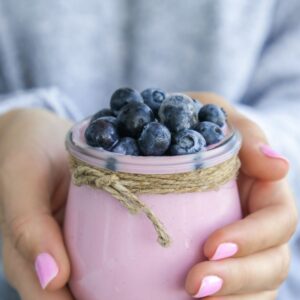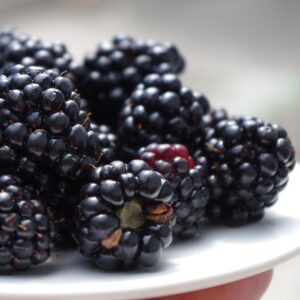 Eat Your Blues – Mama always said to eat your greens, but did she ever mention eating your blues? Blueberries, that is. In a study of the eating habits of 187,000 male and female health workers, those who ate 3 or more servings of blueberries a week had a 26% lower risk for diabetes. In a different study, it was found that eating the equivalent of a cup of blueberries a day lowered blood pressure.
Eat Your Blues – Mama always said to eat your greens, but did she ever mention eating your blues? Blueberries, that is. In a study of the eating habits of 187,000 male and female health workers, those who ate 3 or more servings of blueberries a week had a 26% lower risk for diabetes. In a different study, it was found that eating the equivalent of a cup of blueberries a day lowered blood pressure.
While eating a cup of blueberries every day might not be feasible for everyone, chances are that adding darkly colored fruit and vegetables to your diet is a more reachable goal. Foods like blueberries, cherries, spinach, and kale are packed with nutrients, carotenoids, and fiber. That fiber will help to fill you up so that you’re less likely to snack on less healthy options.
Nutritional data:

Based on a 1-cup (148-gram) serving of raw blueberries:
- Calories: 84
- Fiber: 3.6 grams
- Vitamin C: 16% of the Daily Value (DV)
- Vitamin K: 24% of the DV
- Manganese: 22% of the DV
- Anthocyanins: 163 milligrams
This little blue “wonder food” can help to
• Improve memory
• Prevent cognitive decline
• Lower blood pressure
• Reduce inflammation
• Protect against cancer.
• Support heart and brain health.
Did you know?
- Blueberries are one of the only naturally blue foods, due to anthocyanin, an antioxidant that may have health benefits.
- A single blueberry bush can produce as many as 6,000 blueberries per year.
- Blueberries are related to cranberries, bilberries, and huckleberries – all members of the heather family.
 Other darkly colored foods to add to your diet:
Other darkly colored foods to add to your diet:
• Blackberries, black currants, black grapes, and black plums are rich in anthocyanins – antioxidants that may protect against cancer, diabetes, and inflammation.
• Black beans, black lentils, black rice, and black quinoa are high in protein, fiber, iron, and phytochemicals that may lower blood pressure, cholesterol, and blood sugar.
 • Black olives, black mushrooms, black garlic, and black truffles are sources of healthy fats, vitamin B, selenium, and allicin, which may boost immunity, prevent infections, and improve brain function.
• Black olives, black mushrooms, black garlic, and black truffles are sources of healthy fats, vitamin B, selenium, and allicin, which may boost immunity, prevent infections, and improve brain function.
• Black kale, purple cabbage, purple carrots, and purple potatoes contain anthocyanins, and other phytonutrients, vitamins, and minerals that may benefit eye health, digestion, and blood clotting.
Learn even more about blueberries from the U.S. Highbush Blueberry Council
See how PPMA can help you achieve your healthiest self!



 Other darkly colored foods to add to your diet:
Other darkly colored foods to add to your diet: